In service 1970 Renamed Rio Tecolutla Length 85 m Weight 2,728 tons Range 22.224 million m | Out of service 2016 Launched 1968 Draft 5.03 m Endurance 2 months | |
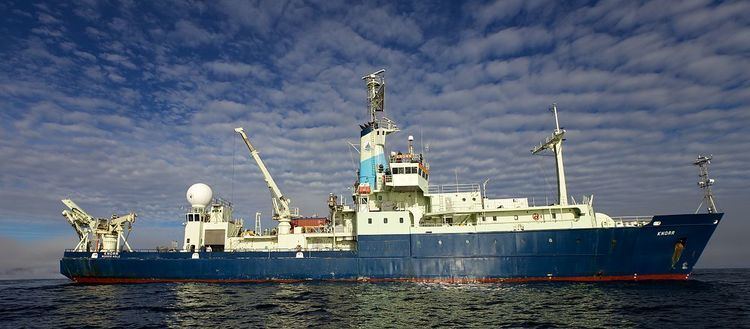 | ||
Fate Transferred to Mexican Navy, 14 March 2016 | ||
Rv knorr
R/V Knorr was a research vessel formerly owned by the U.S. Navy and operated by the Woods Hole Oceanographic Institution for the U.S. research community in coordination with and as a part of the University-National Oceanographic Laboratory System (UNOLS) fleet. On March 14, 2016, Knorr was officially transferred to the Mexican Navy and renamed Rio Tecolutla. She was replaced at Woods Hole by the RV Neil Armstrong. Knorr is best known as the ship that supported researchers on 1 September 1985 as they discovered the wreck of the RMS Titanic. R/V Knorr (AGOR-15) has traveled more than a million miles—the rough equivalent of two round trips to the Moon or forty trips around the Earth. Her sister ship is the R/V Melville.
Contents
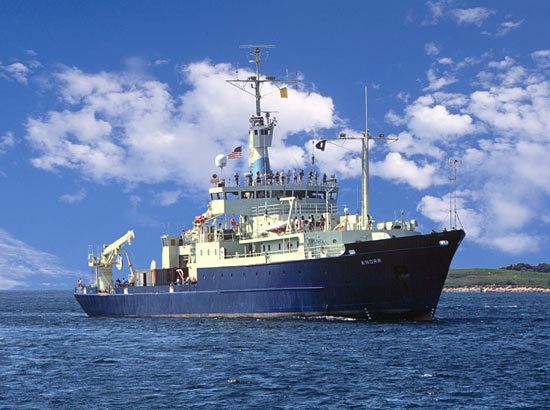
History
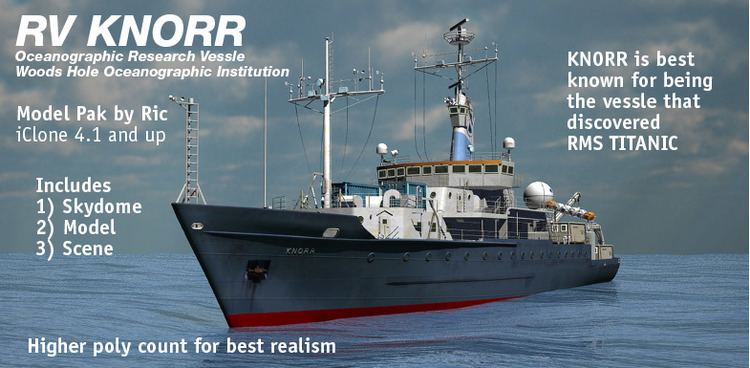
R/V Knorr was named in honor of Ernest R. Knorr, a distinguished hydrographic engineer and cartographer who was appointed Chief Engineer Cartographer of the U.S. Navy Hydrographic office in 1860. Chief Engineer Knorr was one of the leaders of the Navy’s first systematic charting and surveying effort from 1860 to 1885. She was launched in 1968 at the Defoe Shipbuilding Company in Bay City, Michigan, Knorr was delivered to Woods Hole in 1970. For her early life, she had Voith-Schneider propellers.
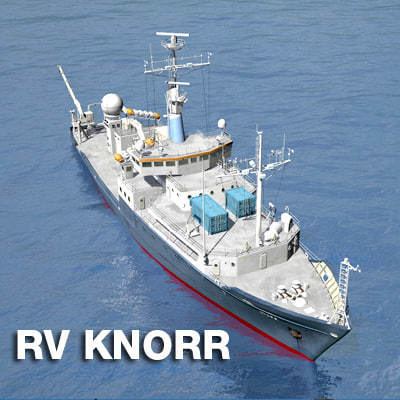
In 1985, she was part of the joint French-American Team that discovered the wreck of the RMS Titanic, and was the ship to actually discover the site. As opposed to the traditional method of sonar, this was accomplished by towing the ROV Argo over the seafloor to search for debris. She was completely overhauled between 1989 and 1991 adding 34 feet (10 m) of length to her midsection [1].
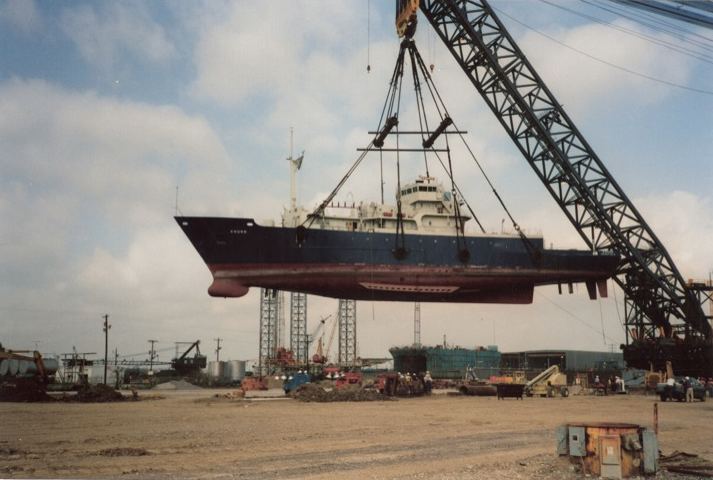
The ship has anti-roll tanks and an ice-strengthened bow enabling her to work in all of the world’s oceans. She can take a crew of 22 and a scientific party of 34 to sea for as long as 60 days. Knorr was designed to accommodate a wide range of oceanographic tasks, with two instrument hangars and eight scientific work areas; a fully equipped machine shop; three oceanographic winches; and two cranes. Knorr is equipped with sophisticated navigation and satellite communication systems, as well as a dynamic positioning system that allows the ship to move in any direction and to maintain a fixed position in high winds and rough seas.[2]
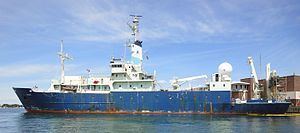
In 2005–2006, the ship was refitted to support a new “long-coring” system that can extract 150-foot (46 m) plugs of ancient sediments from the sea floor. Weighing nearly 25,000 pounds, the new piston-coring system is the longest in the U.S. research fleet (twice as long as existing systems). Knorr and its long-corer will allow scientists to sample deep, ancient sediments that are rich with historical information about the ocean and climate.
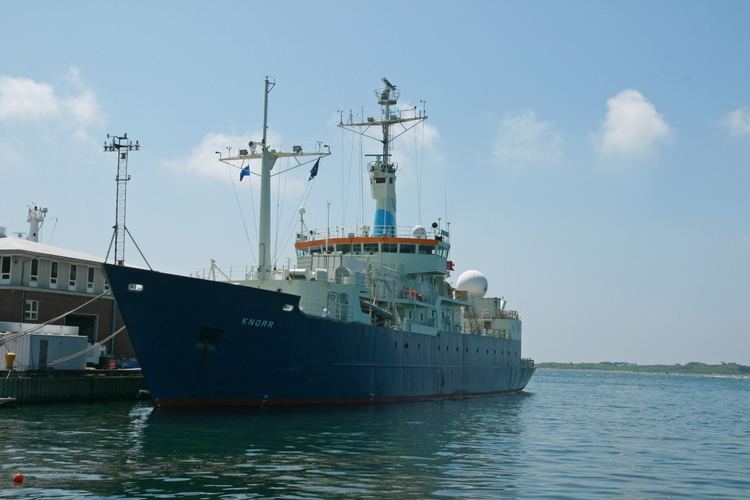
It was announced on December 4, 2014 that the research vessel Knorr is being decommissioned after more than 40 years as the workhorse of the Woods Hole Oceanographic Institution research fleet. It was transferred to the Mexican Navy in 2016, and is scheduled to be replaced by a new $74 million research vessel, the RV Neil Armstrong.
Specifications
Ownership: Title held by U.S. Navy; Operated under charter agreement with Office of Naval Research
Other Features: Two instrument hangars, fully equipped machine shop, dynamic-positioning system, four transducer wells, one rigid-hull inflatable rescue/work boat
